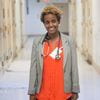DHS-USC Safety Net Innovation Awards
The goals of the Safety Net Innovation Award Program are to bridge the research-policy-practice gap and improve healthcare for underserved, high-disparity populations. The funding program uses a novel team-based approach in which researcher-clinician teams test innovations in healthcare delivery across the Los Angeles County Department of Health Services, the nation’s second-largest public healthcare system. Each year, county leaders announce priority areas to academic researchers, who propose to implement evidence-based interventions aimed at enhancing quality, patient‐centeredness and outcomes of care in those areas. The county provides operational support to facilitate implementation and evaluation of the awarded projects. The Clinical and Translational Science Institute at the University of Southern California and Children’s Hospital Los Angeles provides funding, training, and other research resources. This program is a model for academic/public healthcare system/community partnerships to enhance quality of health care and health equity.
Evaluation of the DHS Cancer Navigation Program to Inform Scale-up and Long-term Sustainability
Awardee: Jennifer Tsui, Ph.D., M.P.H.

Overview
This project directly aligns with DHS infrastructure and operations as it aims to evaluate and inform the optimization and long-term sustainability of the DHS Cancer Navigation Program, a cancer navigation program implemented DHS wide in 2022. In 2020, LA County DHS identified cancer navigation with safety-net patients as one of the most significant factors impacting cancer patient access and outcomes, which led to the launch of a comprehensive system-wide Cancer Navigation Program (CNP) to provide equitable and effective cancer care. The CNP has now undergone 18 months of implementation across all DHS sites (LA General, Harbor-UCLA, Olive View, Martin Luther King, and High Desert) with the purpose of navigating all patients to treatment. Through a mixed-methods, hybrid-effectiveness type II study design, we will evaluate the effectiveness of the DHS Cancer Navigation Program on improving timeliness to oncology care following cancer diagnosis, receipt of guideline-directed treatment and overall care utilization. We will evaluate implementation outcomes, guided by the RE-AIM framework, to assess reach, adoption, implementation, and overall program maintenance and sustainability across DHS sites and cancer lines. The evaluation design, measures, and data analysis and qualitative data collection process will be informed by leaders of the Cancer Navigation Program using a learning health systems perspective within the DHS clinic sites that the program is currently operating. This
study aims are: 1) Evaluate the effectiveness of the DHS Cancer Navigation Program on improving cancer care access, quality, equity, and patient experience among DHS patients; 2) Assess the implementation outcomes of the DHS Cancer Navigation Program and identify core components and practices that are needed to enhance sustainability, optimization and scale-up. While there is ample literature on the importance of patient navigation and care coordination for oncology patients, few studies are based in large municipal health systems, and none have focused on settings the size of DHS. Thus, this study would contribute to our understanding of best practices and effective strategies for oncology navigation within one of the largest county municipal health systems, shedding light on the benefits of investing in care navigation for public-safety net populations and beyond.
Increasing Equitable Access to Genetic Cancer Risk Assessment in DHS Through Enhanced Family Cancer History Capture
Awardee: Charite Ricker, M.S., C.G.C.
 Overview
Overview
Genetic cancer risk assessment (GCRA) uses personal and family history to identify those at elevated cancer risk and guide appropriate screening and prevention interventions. Identifying patients with elevated personal and family cancer risk helps to improve cancer outcomes by providing testing and treatment strategies as early as possible and can help improve equity and reduce disparities in care especially among minoritized populations historically underrepresented in genetic screening and testing programs. However, obtaining personal and family history can be time-consuming and difficult to integrate into a busy clinical practice. In addition, many existing screening tools which focus on identifying women with BRCA1&2-associated hereditary breast and ovarian cancer syndrome do not effectively capture men and individuals at risk for Lynch syndrome, which has a population prevalence higher than BRCA1 and BRCA2. In response, we propose to develop an electronic health record (EHR)-based tool to capture personal and family cancer history conveniently, which aligns with national guidelines and DHS Expected Practices, optimized for identification of at-risk women and men for the major hereditary cancer syndromes. This project aligns with several DHS Strategic Initiatives, leverages existing DHS clinical and informatics infrastructure including eConsult and DHS EHR (i.e., ORCHID/Oracle) and expands on the success of the hereditary cancer questionnaire and screening program in place in the women’s health clinics at Olive View-UCLA Medical Center (OVMC) to improve equitable access to genetic cancer risk assessment among underrepresented communities in LA DHS.
Transformative Chronic Pain Management for Sickle Cell Anemia Patients: A Multidimensional Approach
Awardee: David Dadiomov, Pharm.D.
 Overview
Overview
The project describes the implementation of evidence-based practices to improve the health of individuals with sickle cell disease who receive care at Los Angeles County Department of Health Services (DHS). Preliminary analyses show that individuals with sickle cell disease (SCD) have frequent acute care visits, often due to painful crises, and are often managed with high doses of full-agonist opioids with known long-term risks. Buprenorphine is a proven clinical treatment which is much safer in long-term use given its unique pharmacology. Evidence shows successful conversion of patients with SCD to buprenorphine for both acute and chronic pain with positive results, yet this modality is underutilized. Further, baseline optimization of other pain-management and disease modifying treatments are still needed.
Provider Education and DHS Implementation of Early Identification and Intervention for Infants
Awardee: Stacey Dusing, P.T., Ph.D.
 Overview
Overview
This project is designed to broaden the fruitful work started by the CP Foundation and expanded by EI3 to improve primary care provider knowledge and standardize best practices in care across DHS. This will be accomplished through addressing 3 aims, each with corresponding metrics: (1) Systemwide evidence-based education to primary care providers on early identification and intervention and benefits of referrals to the right place, for the right child, and at the right time, (2) Reducing Practice Variability and Streamlining Workflow to Increase Early Identification of CP at all 3 DHS hospitals; Olive View UCLA Medical Center, LA General Medical Center, and Harbor UCLA Medical Center and (3) Increase screening for Adverse Childhood Experience (ACE) in High Risk Infant Follow up and Referral to Existing state-funded programs (such as CCS and Regional Centers) and the newly funded Enhanced Care Management (ECM) program to support children and families.
Improving Outcomes of Glaucoma Suspects Identified by Teleretinal Screening in a Diabetic Safety-Net Patient Population
Awardee: Benjamin Xu, M.D., Ph.D.
 Overview
Overview
The primary goal of this project is to shift current practice paradigms and establish the effectiveness of an AI‐assisted intervention for delivering precision screening and care to Los Angeles County Department of Health Services (LAC DHS) patients with or at risk for glaucoma. The funded studies will establish a novel strategy for efficient and sustainable delivery of eye care and demonstrate the patient‐ and system‐centered benefits of AI‐assisted glaucoma screening within the LAC DHS healthcare system.
Hospital‐Based Programs to Address Interpersonal Violence in Los Angeles County: Hybrid 2 Study to Evaluate Implementation and Effectiveness
Awardee: Todd Schneberk, M.D., M.S., M.A.
 Overview
Overview
This project builds on Hospital‐based Interpersonal Violence Intervention Programs (HVIP) developed in the past three years at three partnering Department of Health Services (DHS) trauma centers in Los Angeles County to identify hospitalized patients who are victims of interpersonal violence and to provide a longitudinal, 6‐month outpatient intervention that links patients to diverse, relevant outpatient services addressing social determinants of health (SDOH) and offers care coordination and support. The goal is to use the evidence‐based RE‐AIM implementation framework to identify and initiate strategies to address barriers to successful conduct of HVIPs that address a significant public health gap in care.
Development of an Outpatient Procedure Service to Decrease Utilization of the Emergency Department
Awardee: Shadi Dowlatshahi, M.D. and Barbara Turner, M.D.


Overview
Therapeutic fluid extraction procedures such as therapeutic paracentesis and thoracentesis can generally be safely performed in an ambulatory clinic instead of urgent care settings. Of the three Department of Health Services (DHS) sites with an Emergency Department (ED), only one facility Olive View-UCLA Medical Center offers a paracentesis clinic, while Harbor-UCLA Medical Center and LA General Medical Center do not. Despite the availability of a clinic at Olive View-UCLA Medical Center, patient demand exceeds the capacity of the clinic, resulting inpatients presenting to the ED for these procedures, that may also lead to unnecessary hospitalization for management. Most patients presenting to the DHS EDs, either on their own or referred by their providers, do not need ED care or hospital admission for paracentesis or thoracentesis. This over-utilization of valuable ED and inpatient resources compromises patient access and timeliness of care, as well as risks denied hospital days and poor patient satisfaction. To address this need, we developed and piloted a fluid aspiration (FLASP) clinic at LA General to decrease this demand for urgent care. In this project, we will expand FLASP clinic hours and offer educational and procedural interventions to promote use. We hypothesize that this project will increase clinic use and decrease urgent care use. We will conduct a mixed methods study with key informant interviews to assess patient and provider barriers and facilitators to FLASP clinic use that will guide the intervention. We will quantitatively evaluate our primary outcome, reduction in unnecessary ED use from 30-40 patients per month to 5-7 patients per month, as well as other process measures including reduction in denied hospital days, reduction in hospital admissions, improved patient satisfaction and improved knowledge of patients regarding their disease.
Outcome
-
- Decreased ED utilization, reduced complications, and improved patient care by providing quick access to procedures.
- Allowed for equitable health access.
- Working with DPH to provide lumbar punctures to patients suspected of having neurosyphilis.
- Won National County Association Award.
Disseminating Expected Practices for Gynecologic Preoperative Patients: An Initiative to Standardize Care
Attendee: Christina Dancz, M.D.

Overview
The gynecologic services at LA General Medical Center, Harbor-UCLA Medical Center and Olive View-UCLA Medical Center have the patient volume and diversity to accomplish the goals of this project. There is a significant backlog of surgical procedures due to the COVID pandemic, and it is critically important to minimize potentially unnecessary surgical procedures. We have assembled a team of providers with the interest, talent and knowledge to complete this type of initiative. Dr. Christina Dancz has IHI quality improvement training and has participated in several initiatives at LA General Medical Center. She has worked at LA General for 16 years and has significant experience with clinical outcomes research. She has worked on the Women’s Health Advisory Council with Dr. Erin Saleeby (Harbor/UCLA) Dr. Taji Yazdany (Harbor/UCLA) and Dr. Cecilia Wieslander (Olive View). Each site has an obligation to engage and educate trainees in quality improvement measures, and this initiative will meet the twin goals of education for the departments and improving outcomes for our patients. This project has been reviewed and is supported by leadership in the departments of Anesthesia, Pathology, Radiology, and Surgical Services. It is further supported by the Department Chairs of Obstetrics and Gynecology at all three institutions.
Group Medical Visits to Improve Access and Quality of Care within Department of Health Services Neurology Clinics
Awardee: Elizabeth Joe, M.D.

Overview
This multicenter and multidisciplinary proposal aims to investigate the benefits of group medical visits as a model of chronic care for the most common chronic neurologic disorders, beginning with epilepsy and migraine headache pilot programs at Olive View-UCLA Medical Center and LA General respectively, and then expanding the program to other facilities and neurologic diseases. In this real-world study, we will compare outcomes from patients who participate to those who receive usual care across DHS, while also obtaining measures of patient-centered and disease-specific outcomes from a waiting list control group. We believe that group visits offer the opportunity to improve access to specialty care and improve care quality in a cost neutral manner by increasing provider efficiency and creating the opportunity for patients to learn from the experiences of their peers. Identifying changes on clinical outcomes as well as utilization will support wider scale implementation as a tool to improve access to and quality of care across DHS.
Outcome
-
- Demonstrated feasibility of delivering routine follow up care in a group setting via telemedicine for a safety net population. Patient acceptability of the group visit model was high.
- Obtained pilot data to plan future grant applications. Applying for K23 and other grants.
- The pilot group medical visits for chronic migraine have been incorporated into ongoing care in LAC DHS.
Hot Foot Line: Implementation and harmonization of an instant-triage program to speed care and eliminate preventable diabetes-related amputation in Los Angeles County Department of Health Services.
Awardee: David G. Armstrong, M.D., Ph.D.

Overview
Up to one third of people with diabetes will develop a foot ulcer. Non-healing or chronic ulcerations can lead to infection and subsequent amputation. Five-year mortality of people with chronic wounds, peripheral artery disease, and/or amputation is 50%, which exceeds most cancers. In LA County, there is a remarkable 10-fold variation in amputation rates based on zip code. Assembling a motivated and experienced interdisciplinary team dramatically improves limb salvage. We propose to conduct a 24-month study using a prospective cohort design. This will consist of six-month initial data collection at four institutions: two with a limb salvage team in place (Harbor-UCLA and Olive View-UCLA) and two without a formal limb salvage team (LA General Medical Center and Rancho Los Amigos), evaluating all patients with diabetic foot complications requiring foot surgery or vascular intervention. From this, we will use lessons learned from the existing programs to develop a system for rapid triage and harmonize across the DHS System using best practices. After the initial harmonization, we will compare outcomes in the 18 months after integrating the interdisciplinary “Hot Foot” Line. We anticipate that formation of this team will have a measurable reduction in high-level amputation, hospital length of stay, resource utilization (imaging and parenteral antibiotic), time to operating room, and time to appointment in post-acute (outpatient wound healing) clinics across the system. We also anticipate using this program as a model of care not only for other interdisciplinary county teams, but to help slow the scourge of diabetes related amputation, worldwide.
Outcome
-
- Reduced high‐level amputations (16.4% to 11.7%, p = 0.03) and length of stay (10.1 to 8.9 days, p = 0.02) for patients with diabetic foot ulcers.
- Developed the nation’s first county‐wide limb preservation working group.
- Received DHS Quality Award for saving one million dollars in direct costs by implementing the interdisciplinary limb preservation program at Rancho Los Amigos National Rehabilitation Center.
Rapid Engagement of Patients with Substance Use Disorders through Expedited Triage (RESET): A Jail Implementation Study
Awardee: Lello Tesema, M.D., M.P.H.

Overview
An estimated 60% of jail inmates have a substance use disorder (SUD)1 and many of them will experience forced withdrawal following arrest and incarceration due to sudden discontinuation of the substance. At the Los Angeles County Twin Towers Correctional Facility, up to 70 people per day arrive in or at risk of withdrawal, with alcohol withdrawal resulting in 3 deaths in 2017. Untreated substance withdrawal, particularly from alcohol, opiates, and benzodiazepines, is a significant cause of early mortality and morbidity during incarceration. Jail intake represents a critical window for managing withdrawal and initiating comprehensive, patient-centered addiction treatment services which have been shown to promote successful reentry and sustained abstinence. In order to improve quality of withdrawal care and long-term clinical patient outcomes, the Twin Towers Correctional Facility will implement a multi-strep triage to treatment pathway with a centralized detoxification unit and linkage to community resources prior to patient release. This pathway includes a standardized triage process to guide timely identification and treatment of patients who are actively withdrawing or at risk of withdrawal from alcohol, opiates, and benzodiazepines following arrest; an innovative, dedicated detoxification unit in which patients identified via the triage pathway can receive centralized, best-practice withdrawal care; and linkage to addiction services both during incarceration and following release.
Outcome
-
- Reduced time to treatment for alcohol withdrawal in Los Angeles County jails from 66 to 33 minutes & eliminated decompensated withdrawal.
Addressing Uncontrolled Diabetes in Primary Care: A Lifestyle Redesign Approach
Awardee: Elizabeth Pyatak, Ph.D.

Overview
This study is examining the feasibility of implementing an occupational therapy intervention addressing diabetes management in a primary care clinic within the Los Angeles County Department of Health Services (LAC-DHS), as well as the impact of this intervention approach on clinical outcomes, efficiency and patient-centeredness of care. This implementation science study is evaluating two emerging trends in healthcare delivery: (1) the integration of nontraditional providers into primary care medical home (PCMH) settings to facilitate the delivery of high-quality, comprehensive primary care while reducing the burden on physicians; and (2) the potential value of using occupational therapists to address chronic disease management in this setting.
Outcome
-
- Lowered A1c levels from 10.2% to 9.3% (p=0.003) in patients in occupational therapy program.
- Received President’s Select Abstract award for best scoring research abstract presented at the American Diabetes Association Scientific Sessions.
- Launched a Primary Care Learning Collaborative to support OT practitioners.
- Trained five occupational therapy graduate students in the practice setting of primary care, broadening their capacity to work in a variety of care settings.
- Evaluated care delivery model that improved HbA1c and physician‐related distress among Latinx young adults with type 1 diabetes.
- Demonstrated efficacy of telehealth care model in improving HbA1c and diabetes distress among adolescents and young adults with type 1 diabetes.
